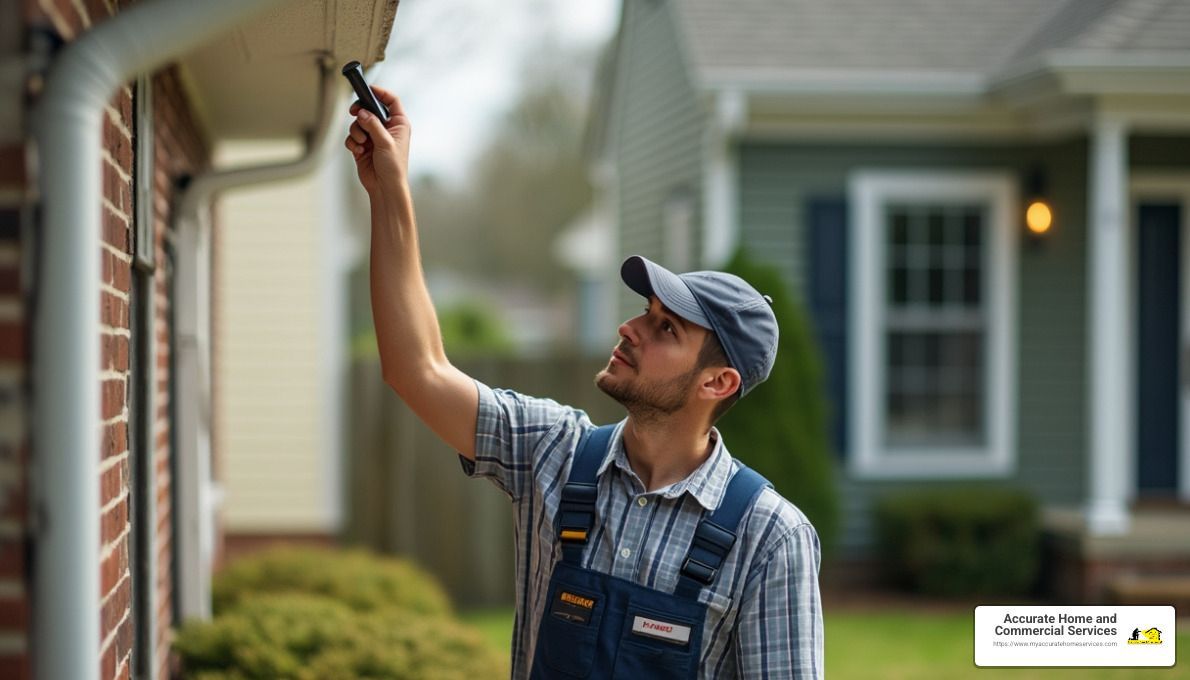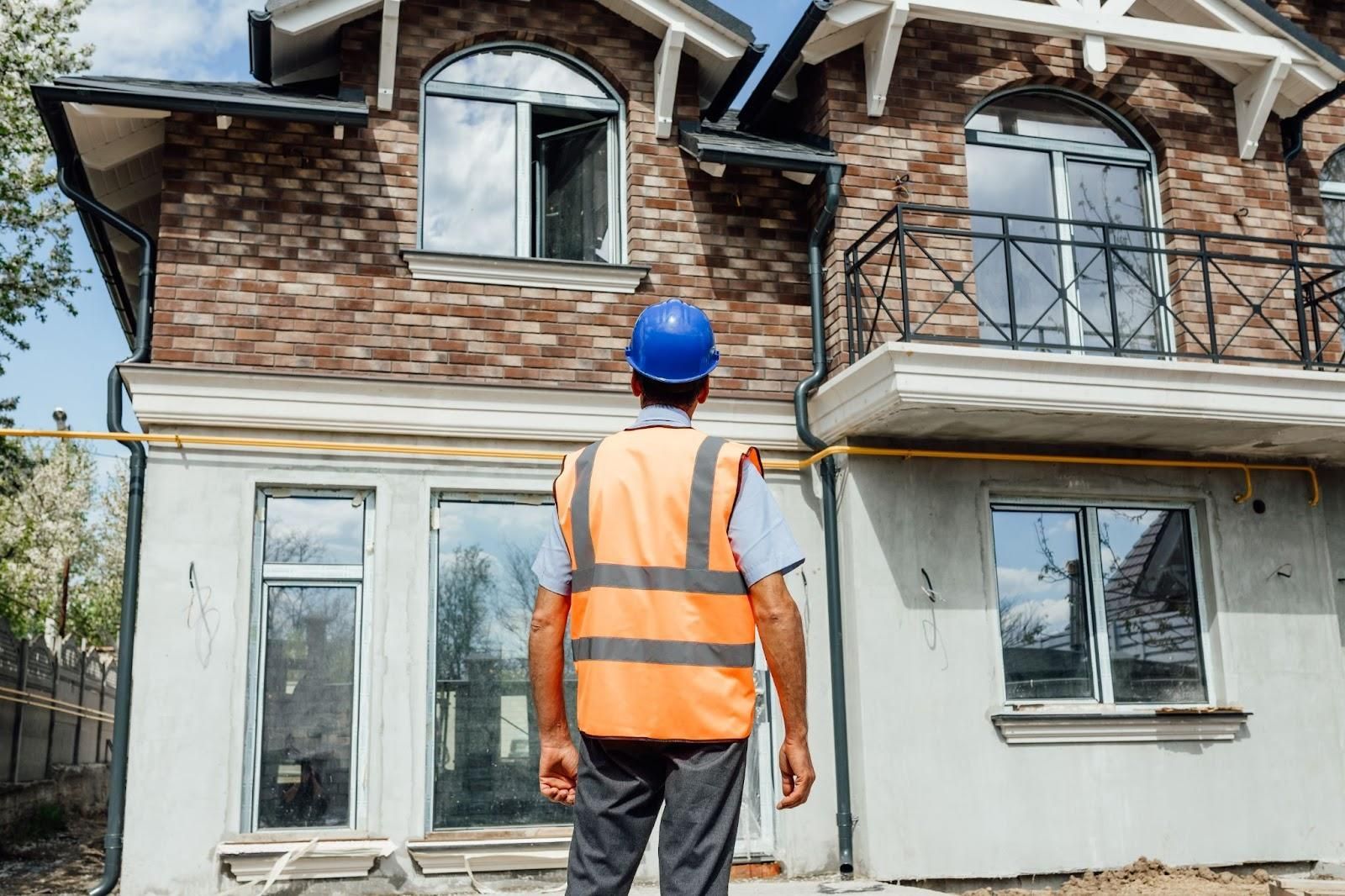Find Local Experts: Benefits of Home Maintenance Inspection Near Me
Finding reliable home maintenance inspection services in your area can feel like searching for a needle in a haystack. Many homeowners struggle with identifying potential issues before they become costly repairs, often facing uncertainty about their property's condition and maintenance needs.
Professional home maintenance inspections offer peace of mind by thoroughly evaluating your property's integrity. These comprehensive assessments cover everything from structural elements to essential systems, helping you protect your investment and plan for future maintenance. With accurate inspections, homeowners can make informed decisions about repairs, renovations, and preventative maintenance, potentially saving thousands in unexpected costs.
Why Home Maintenance Inspections Are Essential for Homeowners
Home maintenance inspections identify critical issues before they escalate into costly repairs. Professional inspectors examine structural components, electrical systems, plumbing networks, and HVAC units to detect early warning signs of deterioration or malfunction. These comprehensive evaluations typically uncover an average of 5-7 minor issues that homeowners overlooked, including moisture intrusion points, inadequate insulation, and worn weather stripping.
Regular inspections protect property value by documenting the home's condition and providing verification of proper maintenance. Homes with documented maintenance histories typically sell 3-5% higher than comparable properties without maintenance records. Additionally, insurance companies often offer premium discounts ranging from 5-15% for homes with recent inspection reports showing proactive maintenance.
Seasonal changes affect homes differently, making biannual inspections particularly valuable. Spring inspections focus on winter damage assessment and summer preparation, while fall inspections prepare the home for cold weather challenges. Detecting minor issues like roof damage, foundation cracks, or drainage problems saves homeowners an average of $3,000-$5,000 in potential emergency repairs annually.
Professional inspectors bring specialized tools such as moisture meters, infrared cameras, and electrical testers that reveal hidden problems invisible to the untrained eye. Their expertise transforms maintenance from reactive to proactive, establishing a customized maintenance schedule based on the home's specific needs, age, and environmental factors.
What to Expect During a Professional Home Maintenance Inspection
Professional home maintenance inspections follow a structured process to thoroughly evaluate your property's condition. When you schedule an inspection with a qualified service provider, they'll arrive with specialized equipment and a systematic approach to assess every critical aspect of your home.
Common Areas Inspected in Your Home
Home inspectors examine multiple key areas during a comprehensive evaluation. The roof inspection checks for damaged shingles, leaks, and gutter functionality. Foundation assessments identify cracks, settling issues, and potential water intrusion points. HVAC systems undergo testing for proper operation, efficiency, and signs of needed maintenance. Electrical systems receive scrutiny for outdated wiring, overloaded circuits, and safety hazards. Plumbing inspections detect leaks, water pressure problems, and pipe condition. Additional areas include attic insulation, ventilation systems, windows, doors, and exterior siding. Inspectors also evaluate drainage patterns around the property and check for pest infestations in crawl spaces, basements, and wooden structures. These thorough examinations create a complete picture of your home's maintenance needs.
Learn more about our comprehensive inspection services
Documentation and Reports You'll Receive
After completing the inspection, you'll receive detailed documentation of all findings. The standard report includes high-resolution digital photographs of problem areas with clear annotations highlighting specific concerns. Most reports contain a prioritized list of recommended repairs categorized by urgency: immediate safety issues, maintenance needs, and cosmetic improvements. You'll find cost estimates for major repairs to help with budgeting decisions. Many inspectors also include maintenance schedules customized to your home's specific needs and age.
Finding Qualified Home Maintenance Inspection Services Near You

Finding qualified home maintenance inspection services in your area requires strategic research and evaluation. Professional inspectors with proper certifications and extensive experience provide thorough assessments that identify potential issues before they become costly problems.
Online Resources and Directories
Online platforms offer convenient ways to locate reputable home maintenance inspection services nearby. Industry-specific websites such as the American Society of Home Inspectors (ASHI) and International Association of Certified Home Inspectors (InterNACHI) maintain searchable databases of certified professionals. Social media platforms and neighborhood apps like Nextdoor feature recommendations from community members who've had positive experiences with local inspectors. These digital resources include valuable information about services offered, pricing structures, and availability windows, streamlining the selection process for homeowners seeking quality inspection services.
Questions to Ask Before Hiring an Inspector
Interviewing potential home maintenance inspectors helps ensure you're hiring a qualified professional who meets your specific needs. Ask about their certifications, licensing, and whether they belong to professional organizations like ASHI or InterNACHI. Request information about their experience, including how many years they've been conducting inspections and their familiarity with homes similar to yours. Inquire about the inspection process—what's included, how long it takes, and whether you can attend. Discuss their reporting methods and how quickly you'll receive documentation after completion. Verify insurance coverage, including liability and errors and omissions insurance. Request sample reports to evaluate thoroughness and clarity. Finally, discuss pricing structure, including any additional fees for specialized assessments of systems like HVAC, plumbing, or electrical components.
Looking for comprehensive home maintenance inspections from experienced professionals? Schedule a service with Accurate Home and Commercial Services today to protect your valuable investment.
Benefits of Regular Home Maintenance Inspections
Regular home maintenance inspections provide homeowners with comprehensive property evaluations that identify potential issues before they become major problems. These inspections offer several key advantages that protect both your financial investment and living environment.
Preventing Costly Repairs
Regular maintenance inspections catch small issues before they escalate into expensive emergencies. Professional inspectors identify an average of 5-7 minor problems during each inspection, from loose roof shingles to small plumbing leaks, that homeowners typically miss. The early detection of these issues prevents them from developing into structural damage, electrical hazards, or water damage that can cost thousands to repair. For example, catching a minor roof leak during inspection might cost $200 to fix, compared to $5,000 or more for water damage repairs if left unaddressed. Inspections also enable homeowners to plan for necessary repairs within their budget rather than facing unexpected emergency costs. This proactive approach to home maintenance significantly reduces long-term expenses and helps avoid the stress of sudden home system failures.
Maintaining Your Home's Value
Home maintenance inspections directly contribute to preserving and increasing property value. Documented regular inspections create a comprehensive maintenance history that serves as valuable evidence of proper care when selling a home. Properties with consistent maintenance records typically sell 3-5% higher than comparable homes without such documentation. Inspections also help maintain optimal functioning of critical home systems like HVAC, plumbing, and electrical components, preventing depreciation that comes from neglect. Insurance companies often recognize the reduced risk associated with well-maintained homes. These benefits make routine maintenance inspections a smart investment that pays dividends through increased home equity, lower insurance costs, and a more competitive position in the real estate market.
DIY Home Inspection Checklist Between Professional Visits
Maintaining your home between professional inspections helps prevent minor issues from becoming major problems. This comprehensive DIY checklist serves as a valuable tool for homeowners to monitor their property's condition regularly.
Exterior Inspection Points:
- Examine roof shingles for damage, lifting, or missing pieces
- Clear gutters and downspouts of debris to prevent water damage
- Check foundation walls for cracks larger than 1/8 inch
- Test exterior faucets and sprinklers for leaks or pressure issues
- Inspect siding for loose panels, rot, or pest damage
- Examine window and door seals for gaps or deterioration
Interior Inspection Points:
- Test all smoke and carbon monoxide detectors monthly
- Check for water stains on ceilings and walls indicating potential leaks
- Inspect visible plumbing connections under sinks for drips
- Test GFCI outlets in bathrooms, kitchen, and exterior outlets
- Look for signs of pest activity in basements, attics, and crawlspaces
- Examine caulking around bathtubs, showers, and sinks
Seasonal Considerations:
- Spring: Check AC system functionality before summer heat
- Summer: Inspect attic ventilation and insulation
- Fall: Clean chimneys and check heating systems before winter
- Winter: Monitor for ice dams on roofs and inspect insulation effectiveness
While DIY inspections help maintain awareness of your home's condition, they don't replace comprehensive professional evaluations that utilize specialized equipment and trained expertise to identify hidden issues.

Conclusion
Professional home maintenance inspections are invaluable investments that protect your property and financial well-being. By partnering with qualified local inspectors, homeowners gain critical insights into their property's condition through comprehensive evaluations that DIY checks simply can't match.
The modest cost of regular inspections ($300-$600) pales in comparison to the thousands saved by addressing small issues before they become major disasters. These documented assessments not only guide smart maintenance decisions but also enhance property value, strengthen insurance claims and potentially qualify you for premium discounts.
Finding "home maintenance inspection near me" has never been easier with online resources to locate certified professionals in your area. Take this proactive step today to safeguard your home's future and enjoy the peace of mind that comes with proper maintenance.
Frequently Asked Questions
How often should I have a home maintenance inspection?
Experts recommend scheduling professional home maintenance inspections biannually—ideally in spring and fall. This frequency helps you address seasonal challenges and maintain your property throughout the year. Regular inspections can save homeowners thousands of dollars by identifying minor issues before they become expensive emergency repairs.
What areas of my home are examined during a professional inspection?
Professional inspectors examine all critical areas including the roof, foundation, HVAC systems, electrical systems, plumbing, insulation, windows, doors, and exterior components. They also check for moisture issues, pest infestations, and structural concerns. The comprehensive evaluation provides a complete picture of your home's condition using specialized equipment.
How much does a home maintenance inspection cost?
Home maintenance inspections typically cost between $300 and $600, depending on your home's size, age, location, inspection scope, and inspector qualifications. While this represents an upfront investment, professional inspections commonly identify 5-10 maintenance issues that can save homeowners $2,000-$5,000 in future repairs.
What's the difference between a home maintenance inspection and a home buyer's inspection?
A home buyer's inspection is a one-time evaluation performed during a real estate transaction, while maintenance inspections are regular check-ups for existing homeowners. Maintenance inspections focus on preventative care and ongoing issues, providing more detailed maintenance recommendations and prioritized repair schedules tailored to your specific property needs.
How do I find a qualified home inspector?
Look for inspectors through reputable online platforms like HomeAdvisor, Angi, or Thumbtack. Verify credentials, including certifications from organizations like InterNACHI or ASHI. Ask about their experience, inspection process, reporting methods, and pricing before hiring. Reading reviews and checking references can help ensure you're working with a qualified professional.
What documentation will I receive after an inspection?
Following your inspection, you'll receive a comprehensive report that typically includes high-resolution photographs documenting issues, prioritized repair recommendations, estimated repair costs, and a customized maintenance schedule. This documentation serves as a valuable reference for planning maintenance activities and can be helpful for insurance claims or when selling your home.
Can I perform my own home inspections between professional visits?
Yes, you can conduct basic DIY inspections between professional visits. Focus on checking roof shingles, gutters, foundation, plumbing fixtures, electrical outlets, HVAC filters, smoke detectors, and appliances. However, DIY inspections cannot replace professional evaluations, as professionals have specialized equipment and training to identify hidden issues you might miss.
How do regular home maintenance inspections affect my property value?
Regular inspections can increase your property value by documenting consistent maintenance, which appeals to potential buyers. Homes with detailed maintenance records typically sell for higher prices and spend less time on the market. Additionally, addressing issues early prevents value-decreasing damage and may qualify you for insurance discounts.











